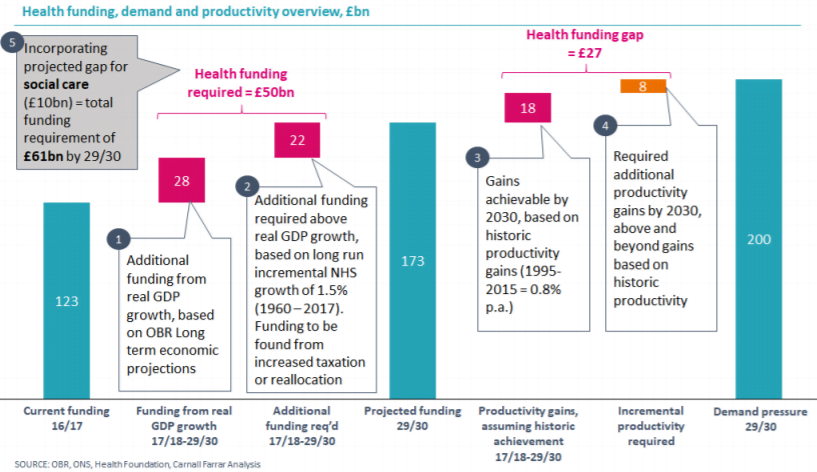Lord Darzi NHS report – key findings
Dear Friend,
By the time you read this, I will be a few hours away from completing my weekend on-call. This weekend, I am doing ward cover, which is by far my least favourite shift. The constant sound of the bleep, doing endless reviews on patients that you know nothing about, and then just when you think it is quiet the emergency buzzer goes off. Over the years I have learnt how to be more prepared and prioritise patients, but it is still probably the only shift which makes me nervous before I go in.
This week, I was hit with the sad news that one of my best friends from medical school has decided to leave medicine. Another one bits the dust. Reasons include feeling absolutely burnt out, being placed far away from where she lives so she has to commute 90 mins each way daily – basically not being able to see any light at the end of tunnel. I then went onto LinkedIn to see another one of university colleagues who left medicine for consultancy.
In the news this week, a major story has been the publishing of Lord Darzi’s report into the NHS, to identify its key weaknesses and make recommendations for the future. Whether you are at school or a student, I really do recommend keeping up with news items like this, as it will certainly impact your lives. To make it easier, I’ll summarise some of the key findings and take messages. I’ll leave you to decide whether you think it might work.

Lord Darzi report – key findings
The report by Lord Darzi offers a comprehensive analysis of the problems confronting the healthcare system and the present state of the NHS in England. Lord Darzi is an academic surgeon who holds the Paul Hamlyn Chair of Surgery at Imperial College London. He is an expert in minimally invasive and robot-assisted surgery, having invented numerous novel methods and tools.
There has been a “surge” in a number of chronic illnesses, with children and young adults experiencing worse mental health more frequently. Both childhood vaccination rates and adult participation in programmes like breast cancer screening have declined.
There were 2.8 million people who were economically inactive at the beginning of 2024 as a result of chronic illness, with mental health issues accounting for the majority of the increase since the epidemic.
All waiting times, including those for surgery, cancer treatment, A&E, and mental health treatments, are falling short of their targets.
Low income, unstable employment, and subpar housing have all been contributing factors over the past 15 years, as well as the increasing difficulties people are experiencing in being able to access their GPs.
Lord Darzi said: “GPs are seeing more patients than ever before but, with the number of fully qualified GPs relative to the population falling, waiting times are rising and patient satisfaction is at its lowest ever level.”
Both the cancer death rates and cancer care rates are higher in this country than in others. Between 2013 and 2021, there was “no progress whatsoever” in the diagnosis of cancer at stages I and II. More recent data, though, indicates some progress. There is also bad news when it comes to another major killer. While quick access to treatment has worsened, progress in lowering the death rate from heart disease has regressed.
Meanwhile, the NHS budget is “is not being spent where it should be”, with too much money “spent in hospitals, too little in the community, and productivity is too low”. Individuals in need of social care occupy an excessive number of hospital beds.
The number of community-based nurses decreased by five per cent between 2009 and 2023, whilst the number of health visitors decreased by more than 20 per cent during the same period.
The NHS is left with dilapidated facilities and an excessive number of antiquated scanners as a result of capital budget raids and “parts of the NHS are yet to enter the digital era”.
Compared to other similar health systems, the NHS postponed, cancelled, or delayed a great deal more regular care during the epidemic.
“Distressingly high levels of sickness absence” and “disengaged” workforces are prevalent in the NHS.
Summary
This report paints quite a gloomy picture of the NHS, but it certainly is not far from the truth that we all can see. Going forward, the government has prioritised reform – whatever this means. Basically trying to shift more care into the comunity and digitisng the NHS. It is shocking that when literally everyone has smartphones, we still use paper notes in majority of hospital.
If I look at this optimistically, at least the government has acknowledged there is a problem. But that in many ways is the easy part, let’s see what can be done. In the meantime, I try not to think about too much of this. Just get through my shifts and climb up the ladder.
Hope you have a lovely week.
Drug of the week
Amphotericin B
This drug binds to ergosterols in the cell membrane to make large pores.
This leads to the leakage of cell contents leading to cell death.
It is a broad-spectrum antibiotic which is used for many systemic fungal infections.
It has a low therapeutic index as it also affects human membranes which have cholesterol.
Side effects include flu-like symptoms, nephrotoxicity, hypokalaemia and hypomagnesaemia

A Brain Teaser
A 38-year-old woman who has a 3-month old baby comes to see you as her friend’s baby has had a hip ultrasound and she believes it is unfair that this has not been offered to her child. You explain to her that only babies who have risk factors for hip dysplasia are offered an ultrasound.
Which one of the following is a risk factor for hip dysplasia?
A: Forceps delivery
B: Maternal age > 40 years
C: Breech presentation
D: Ventouse delivery
E: Maternal obesity
Answers
The answer is C – Breech delivery.
Ultrasound screening for developmental dysplasia of the hip (DDH) is done at 6 weeks of age for newborns with specific risk factors.
These include
- A first-degree family history of hip problems in early life.
- Breech presentation at or after 36 weeks gestation (irrespective of presentation at delivery)
- Breech presentation at delivery if this is earlier than 36 weeks.
Furthermore, those children found to have a positive Barlow or Ortolani test are sent for a hip ultrasound to rule out DDH.




